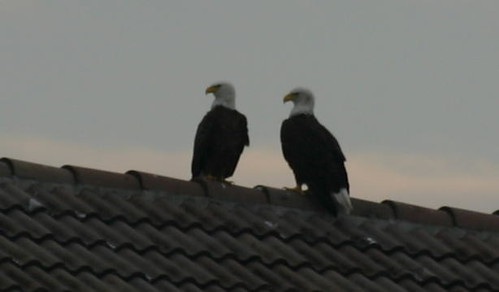
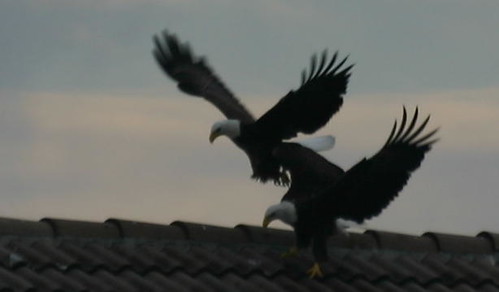
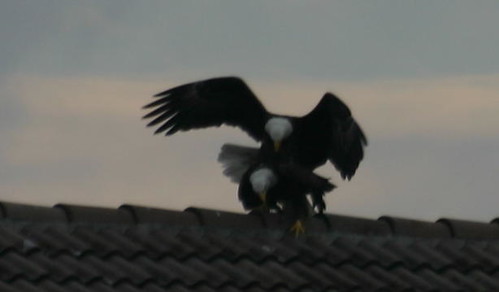
This led to a search and "discovery" of their nest in March, 2008, in the neighboring City of Pembroke Pines. It was in a roadside Australian Pine about 2 miles northwest of our home. It contained a single eaglet. Subsequently, they have returned to the same nest each year. With a group of local residents, I have tracked their breeding successes and failures, and recorded behavioral observations on a spreadsheet. Over the past 5 seasons they have produced 9 eaglets, and all but one fledged successfully.
Here, two of our granddaughters are shown viewing the nest in 2009.
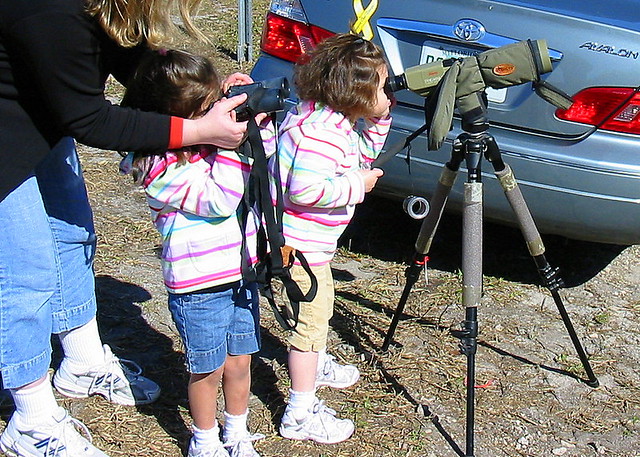
The 2009-10 season was a spectacular success, with three eaglets. Local middle school students studied their progress. They selected several "candidate" names, and on an internet poll held an "election" that resulted in them being named (in hatch order) "Lucky," "Chance" and "Courage."
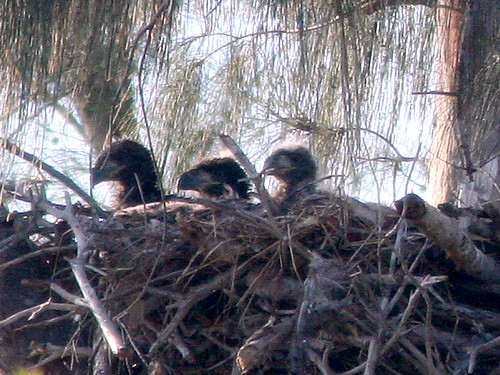
Sadly, their single chick that hatched last season disappeared just a few days before it would have been old enough to fly freely. This blog entry describes how we searched for it without success. Here is "P. Piney Nine" in happier days.
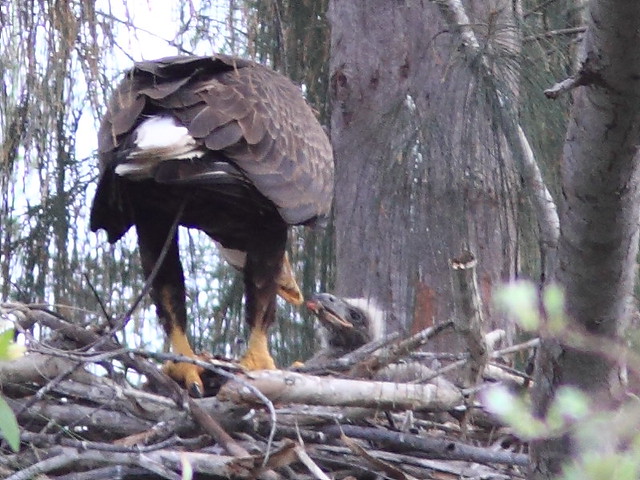
This season, the pair returned to the nest in late September and began refurbishing the nest. Based upon our ground observations, their first egg was laid on or about November 27. With an expected incubation period of 35 days, it should hatch around New Year's Day, 2013. Visit this link to view a chart that summarizes the milestones for each of the past 5 breeding season, and a FORUM where volunteers post their observations .
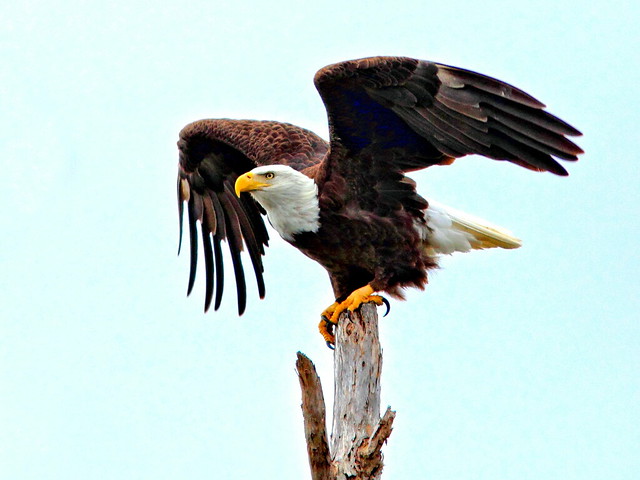
Mary Lou and I regularly stop by the nest just to check on the welfare of the eagles. During incubation, about the only interesting thing that might happen would be an exchange of incubation duties. The female usually sits on the eggs all night, with the male roosting nearby. He then flies out to forage shortly after sunrise and returns to the nest area a couple of hours later. We arrived at the eagle nest just before 9:00 AM on the morning of December 21. It was a cool 65 (F) and there was a steady wind in from the north, behind me. The female was incubating deep in the nest, the top of her head barely visible.
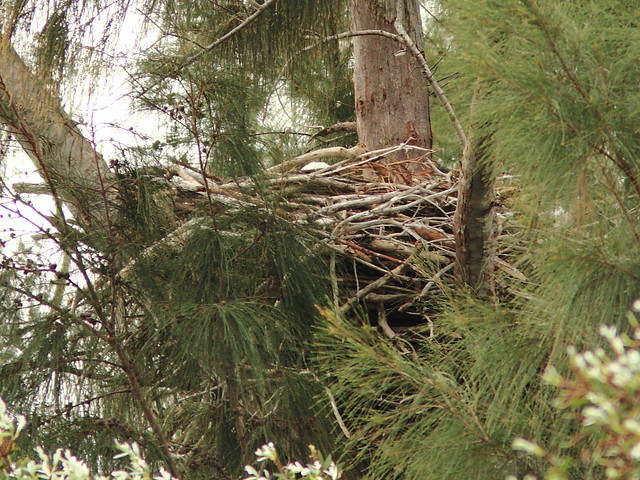
Only about a minute later she started calling and the male flew in from behind the nest area and took a roost in a tree a short distance to the west (right) of the nest.
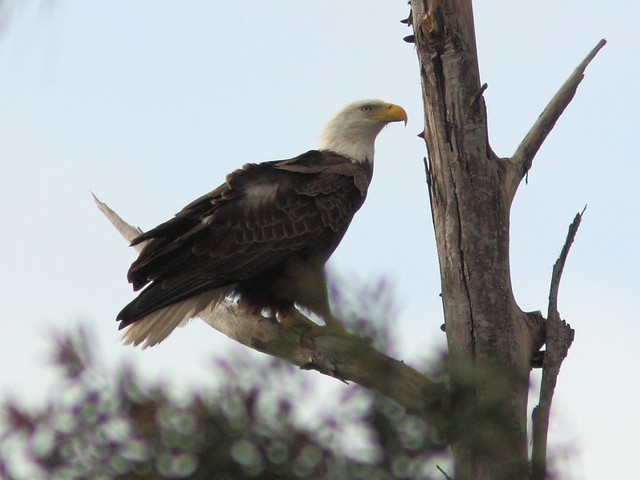
They called to each other for a moment, then the male launched up and into the wind, passing in front of the nest, disappeared briefly behind the nest, then landed on the nest into the wind.


The pair exchanged incubation duties, and the female promptly flew into the Melalaeuca snags to the west of the nest area.

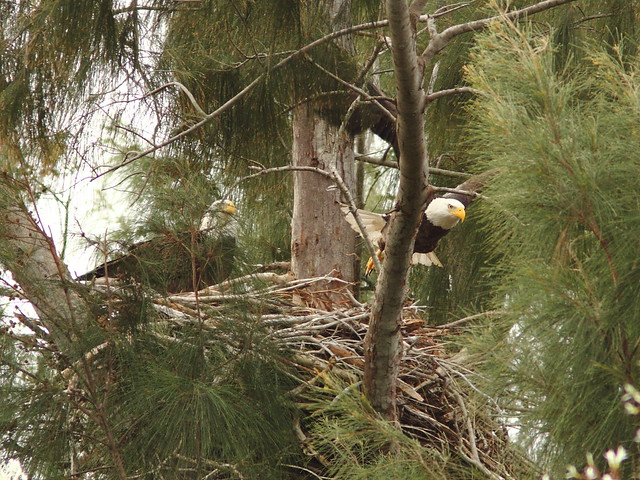
There, she preened for a while and was still there when we departed about 20 minutes later.
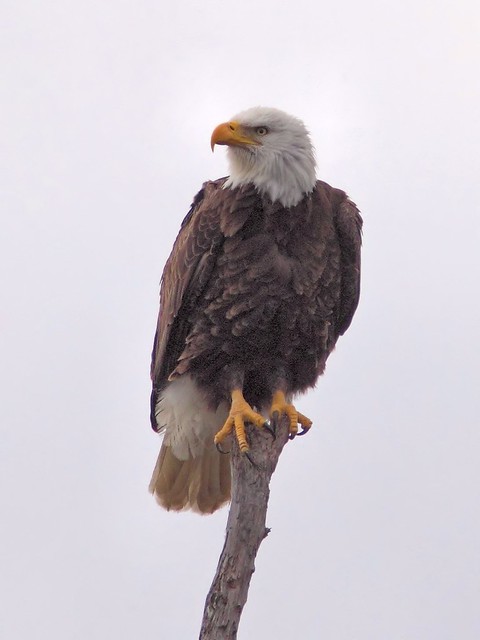
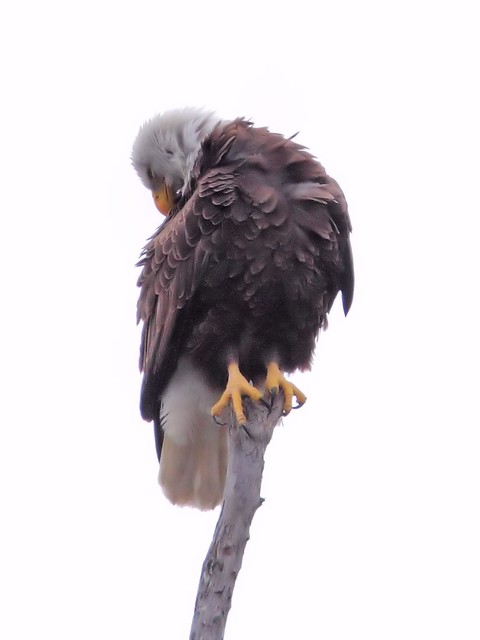
The male is noticeabley smaller and slimmer, and his forehead is almost in line with the ridge (culmen) of his bill.

The female has more of an angle between the culmen and her forehead.
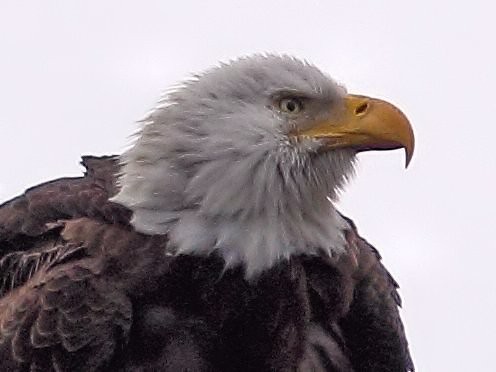
We are hoping that the eagles enjoy a happy and successful New Year, and we wish the same to all of you!
these are such great shots! i'd love to see eagles in the wild!
ReplyDeleteKen, very cool series on the Bald Eagles! I wish you all the best in 2013, Happy New Years!
ReplyDeleteThanks for the great photos and commentary as always, Ken. In large measure, my family's interest in birding was kindled because of your work here. Thank you, and I hope you and your family have a happy and safe New Year.
ReplyDeleteI'm in awe of your photos, Ken. You have done a fantastic job of keeping track of this pair of Eagles and their young.
ReplyDeleteHappy New Year to you and Mary Lou.
Beautiful series!! Boom & Gary of the Vermilon River, Canada.
ReplyDeleteWhat a wonderful post and collection of photos!
ReplyDeleteGreat pictures you show. Wishing you and your a Happy New Year :) Hanne Bente
ReplyDeleteWow....just plain wow!!!! What an incredibly informative post. And such wonderful images. All I can say, truly, is wow.
ReplyDeleteThanks for lending and sharing your link this week at the Bird D'Pot!! And, have a happy New Year!
Wonderful shots and a great story Ken. How marvellous to have those birds so close and to be able to show them to the young generation as you have. Forgive me but your word "courtship" made me smile, a word that one does not hear nowadays, certainly here in the UK.
ReplyDeletebird shots I can only dream of. :) Thanks for sharing the family. :)
ReplyDeleteHow lucky you are to be able to watch the nest of the bald eagle. Wonderful photos.
ReplyDeleteA terrific series, that's a huge nest!
ReplyDeletemagnificent post and wonderful photographs
ReplyDeleteI never tire of seeing these magnificent birds. One of these days we will take a ride to PP to see if we can spot the Eagles nest.
ReplyDeleteMagnificent birds and it's really great that you and others keep such a close watch on their progress.
ReplyDeleteWhat a great story and set of pictures - and I thought I was lucky that I had a blackbird nesting nearby!
ReplyDeleteCheers and thanks for linking to WBW.
Stewart M - Melbourne
Wonderful shots! They are such diligent parents, but it seems like they need much good fortune to succeed in raising their nestlings.
ReplyDeleteGreat series.
ReplyDelete